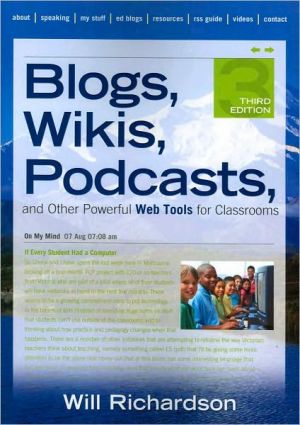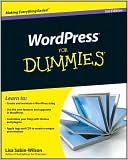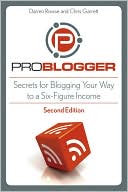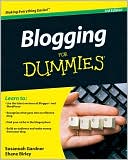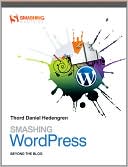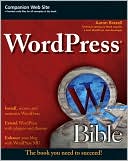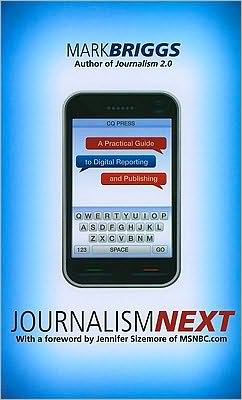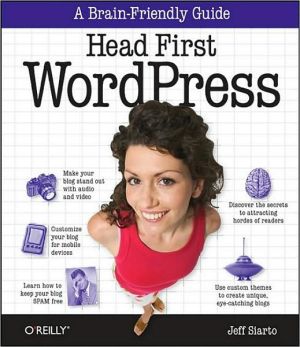Blogs, Wikis, Podcasts, and Other Powerful Web Tools for Classrooms
For educators of all disciplines, this third edition of a bestseller provides K–12 examples of how Web tools such as blogs, wikis, Facebook, and Twitter allow students to learn more, create more, and communicate better.
Search in google:
"Hits the nail on the head by emphasizing how technology can be used in ways that go beyond one-on-one student use of software programs and teachers' use of PowerPoint for presentations. The book emphasizes the collaborative work and learning that can occur when educators take advantage of all that the Internet has to offer." Erica Boling, Assistant Professor of Literacy Education Rutgers, The State of University of New Jersey. Use the Web to help students learn more, create more, and communicate more effectively! Technology impacts every facet of students' lives and plays a significant role in how students receive and process information. The second edition of Blogs, Wikis, Podcasts, and Other Powerful Web Tools for Classrooms shows educators at all levels and disciplines how to tap into the potential of digital tools for creating relevant, interactive learning experiences in the classroom. With updated research on Web technology, a critical section on Internet safety, and a new emphasis on information literacy with related links, this resource equips teachers with Definitions, explanations, and how-to's for using technology to enhance learning. Applications for blogs, wikis, podcasts, Real Simple Syndication (RSS) feeds, aggregators, social bookmarking, and online photo galleries Real-world examples from K-12 teachers around the world When Teachers expand their knowledge of Web tools to build 21 st-century learning skills, they can effectively prepare students for future success.
Preface to the Third Edition ixAbout the Author xi1 The Read/Write Web 1A New World Wide Web 2Extraordinary Changes 3The Read/Write Web in Education 6Social Learning 7Learners as Teachers 8The Toolbox 9Keeping Students Safe 112 Weblogs: Pedagogy and Practice 17Weblogs in Schools 20The Pedagogy of Weblogs 26Blogging Across the Curriculum 33Blogs as Resources 37Classroom Uses of Weblogs 39Standards for the English Language Arts Sponsored by NCTE and IRA 413 Weblogs: Get Started! 43Start Small 44Blogging With Students 45Blog Safety 46Blog Software 47Blogging Step by Step 48Adding Pictures and More to Blog Posts 524 Wikis: Easy Collaboration for All 55The Challenge of Wikipedia in Schools 59Wikis in Schools 60Examples of Wikis in K-12 Education 63Wiki Tools for Schools 66Other Wiki Tools and Resources 685 RSS: The New Killer App for Educators 71Setting Up an RSS Feed Reader 73Reading and Sharing 76Using RSS Feeds in the Classroom 77Combining RSS Feeds 81ncluding RSS Feeds in Your Weblog 81Reading RSS Feeds 826 The Social Web: Learning Together 85Welcome to the Twitterverse! 86Social Bookmarking Services 897 Fun With Flickr: Creating, Publishing, and Using Images Online 101Introducing Flickr 102Learning With Flickr 103Flickr in Practice 108More Flickr Fun 1098 Podcasting, Video and Screencasting, and Live Streaming: Multimedia Publishing for the Masses 111Podcasting 112Podcasts and Schools 115Getting Started With Podcasting 117Screencasting 123Live Streaming-Web TV for the Classrooms 1259 Social Networks: Facebook, Ning, Connections, and Communities 131Facebook for Personal Connections 133Facebook in the Classroom 136A Ning for All Passions 139Ning in the Classroom 141Setting Up Your Ning Site 14410 What It All Means 147New Literacies 148The Big Shifts 149Just the Beginning 155Epilogue: The Classroom of the Read/Write Web 157References 161Index 165
\ Curtis J. Bonk"This book is loaded with insightful and honest advice about the Web 2.0 in education. Will Richardson has amassed decades of technology integration experience as a teacher, consultant, blogger, and educational leader. There are few like him and few books like this.”\ \ \ \ \ Howard Rheingold"Richardson's book was a touchstone for me when I started trying to figure out how to integrate participatory media into my teaching. I recommend this book to any teacher at any level who is interested in the learner-centric pedagogy that social media enables."\ \ \ Jeff Jarvis"Thebest guide you can find to using the power of the Internet in your classroom."\ \ \ \ \ Communicator"This comprehensive guide on how to incorporate podcasts, screen-casting, blogs and other multimedia features into today's journalism brings convergence to the classroom. "— Melanie Lo\ \ \ \ \ Mike Muir"This book deals with such a hot topic in a wonderfully practical way. We need a solid book explaining and illustrating and letting teachers know about these powerful tools. This book meets the need in an awesome way!"\ \ \ \ \ Gary Graves"This author is a gem! It startles me to be 'pulled' so happily through a text about these new Web tools in the context of good literacy instruction."\ \ \ \ \ wordpress.com Education PR"Richardson shares first hand classroom experience of how the read / write web opens up new possibilities for students to learn from each other and from authors, scientists, and other professionals."\ \ \ \ \ Tech Learning"Whether it’s blogs, or wikis, or RSS, all roads now point to a Web where little is done in isolation . . . That’s not to say that in this new world students don’t do their own work. But it does mean that responsibility for that work is in some way shared. Learning is a continuous conversation among many participants. "\ \ \ \ \ Education Week"Shows teachers how to integrate new Web tools into their instruction to both enhance their practice and foster student learning. Gives guidance on teaching students how to use the Internet responsibly."\ \ \ \ \ Communicator"This comprehensive guide on how to incorporate podcasts, screen-casting, blogs and other multimedia features into today's journalism brings convergence to the classroom."\ \ \ \ \ Teachers College Record"Richardson understands digital tools and is able to translate that understanding to his readers. He writes about teens using the software in appropriate and innovative ways to illustrate what can and should be occurring in classrooms."\ \ \ \ \ Magdalena M. C. Mok"Very user-friendly.Gives a step-by-step method through which students can maximize their learning strengths and transform into engaging, successful learners."\ \ \ \ \ September 2006 Choice Magazine"An absolute must for anyone attempting to keep up-to-date with Web tools for the classroom. Preservice or practicing educators, teachers, administrators, parents, or interested parties can find all they want to know about the new tools of the Read/Write Web, including what they are, what they do, how teachers use them, and the first steps to take toward using them. "\ \ \ \ \ Los Angeles Times"Clearly and persuasively written, the book is loaded with information about the cutting-edge Internet features that make up so-called Web 2.0. Richardson meticulously makes connections between these tools and the classroom. He is comfortable writing about both the pedagogical implications of the technologies and also the directions for using them."\ \ \ \ \ New Zealand Studies of Applied Linguistics"This is the book to read if you are keen to use Web tools in your classroom but aren't quite sure where to start. Richardson's book makes clear not just how to integrate such tools in your classroom, but why you should and what difference it can make in your teaching."\ \ \ \ \ Erica Boling"Hits the nail on the head by emphasizing how technology can be used in ways that go beyond one-on-one student use of software programs and teachers’ use of Power Point for presentations. The book emphasizes the collaborative work and learning that can occur when educators take advantage of all that the Internet has to offer."\ \ \ \ \ Karen Stearns"This is a book that I woulduse immediately with my preservice teachers or department if I were a K-12 supervisor. Important, though, is getting it in teachers’ hands as soon as possible."\ \ \ \ \ tech Learning"Whether it’s blogs, or wikis, or RSS, all roads now point to a Web where little is done in isolation . . . That’s not to say that in this new world students don’t do their own work. But it does mean that responsibility for that work is in some way shared. Learning is a continuous conversation among many participants."\ \ \ \ \ September 2006 CHOICE"An absolute must for anyone attempting to keep up-to-date with Web tools for the classroom. Preservice or practicing educators, teachers, administrators, parents, or interested parties can find all they want to know about the new tools of the Read/Write Web, including what they are, what they do, how teachers use them, and the first steps to take toward using them."\ \
